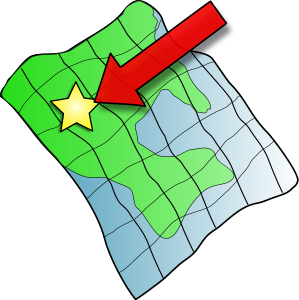Restless Earth: Difference between revisions
(Created page with "{{ResourcePageGroupMenu|External Visits & Visitors}} {{Rinfo |title= Restless Earth |topic= Maps |subject=Teacher Education |resourcenumber= TE00105 |age= Secondary, Year 1...") |
m (subjects, ages, types) |
||
| (29 intermediate revisions by 3 users not shown) | |||
| Line 1: | Line 1: | ||
{{ResourcePageGroupMenu|External Visits & Visitors}} | {{ResourcePageGroupMenu|External Visits & Visitors}} | ||
{{Rinfo | {{Rinfo | ||
|type= Teacher Education | |||
|attribution={{British Cartographic Society}} | |||
|title= Restless Earth | |title= Restless Earth | ||
|image=ruffledmap.png | |||
|tagline= How would you respond? Using maps to model disaster support and recover exercises. | |||
|topic= Maps | |topic= Maps | ||
|subject=Teacher Education | |subject=Teacher Education, Cross-curricular | ||
|resourcenumber= | |resourcenumber= TE0122 | ||
|age= Secondary, | |age= Year 10, Secondary, Higher | ||
|content= Simulating how maps are used by Disaster Recovery Agencies to support the rescue and recovery effort. Delivered as a workshop that supports both Edexcel and AQA Physical Geography modules entitled The Restless Earth, specifically the following key ideas: | |content= Simulating how maps are used by Disaster Recovery Agencies to support the rescue and recovery effort. Delivered as a workshop that supports both Edexcel and AQA Physical Geography modules entitled The Restless Earth, specifically the following key ideas: | ||
|strategy= | * Earthquakes occur at constructive, destructive and conservative plate margins: features of earthquakes – epicentre, focus, shock waves. | ||
|Learning Objectives= By the end of this workshop students should be able to: | * The effects of earthquakes and responses to them: primary and secondary effects; immediate and long term responses. | ||
* Tsunamis are a specific secondary effect and can have devastating effects in coastal areas: a case study of a tsunami – its cause, effects and responses. | |||
|strategy= | |||
|Learning Objectives= By the end of this workshop students should be able to: | |||
* Understand how different roles in disaster mapping have conflicting needs and how suitable resolution requires problem solving skills, | |||
* Appreciate that team work is crucial in disaster recovery including sharing knowledge and resources, | |||
* Describe the basic elements of good mapping for disasters. | |||
|additional resources=NA | |||
|useful information= | |useful information= | ||
|related resources= | |related resources= | ||
|other= BCS, Restless Earth event: | |other= BCS, Restless Earth event: http://www.cartography.org.uk/default.asp?contentID=982 | ||
http://www.cartography.org.uk/default.asp?contentID=982 | |||
MapAction http://www.mapaction.org | MapAction http://www.mapaction.org | ||
|format | |format=The materials provided are a sample of those used in an organised workshop delivered by the British Cartographic Society (BCS), the Defence Geographic Agency (DGA) and MapAction. The scenario is based on the Sendai region of Japan. | ||
|resources= Details for the event and what it is about can be [[Restless Earth/Document|viewed as WikiText here]] | |||
* Restless earth flier outlining the event (366kb) [[File:Restless_earth_flier.pdf]], | |||
* BCS info for teachers before the event & brief outline of how day operates [[File:BCS_info_for_teachers_before_the_event.doc]], | |||
* Restless Earth Presentation before event (2.10 MB) [[File:Restless_Earth_Presentation_before_event.ppt]] | |||
* Restless Earth Workshop Role Descriptions before event [[File:Restless_Earth_Workshop_Role_Descriptions.doc]], | |||
* Restless Earth Teacher Notes (more detailed information about the event including web resources and outline of student roles in teams) [[File:Restless_Earth_Teacher_Notes_before_event_2012.doc]]. | |||
|final=yes | |||
}} | }} | ||
[[Category:teacher Education]] | [[Category:teacher Education]] [[Category:Cross-curricular]] | ||
Latest revision as of 15:45, 28 September 2012
About. Simulating how maps are used by Disaster Recovery Agencies to support the rescue and recovery effort. Delivered as a workshop that supports both Edexcel and AQA Physical Geography modules entitled The Restless Earth, specifically the following key ideas:
- Earthquakes occur at constructive, destructive and conservative plate margins: features of earthquakes – epicentre, focus, shock waves.
- The effects of earthquakes and responses to them: primary and secondary effects; immediate and long term responses.
- Tsunamis are a specific secondary effect and can have devastating effects in coastal areas: a case study of a tsunami – its cause, effects and responses.
Pedagogical content. This is a free workshop offered by the British Cartographic Society (BCS). Students are assigned roles for group work(ta) tasks to represent various disaster recovery agencies. Learning and teaching focuses around small group work, co-inquiry(ta), exploring ideas alongside negotiation, enquiry-based learning as well as a final whole class(ta) dialogue(ta). The overall aim of the workshop is for each group to produce a map suitable to meet the needs of the various disaster recovery agencies.
BCS organise and supervise the event on the day. They run the workshops throughout the year at a variety of locations. Schools can host their own event or attend an organised one elsewhere. The only proviso is that BCS have access to a large hall with Internet available.
If you would like to host or attend a Restless Earth workshop please contact the British Cartographic Society via the following link: http://www.cartography.org.uk/default.asp?contentID=982 (edit)
| Resource details | |
| Title | Restless Earth |
| Topic | [[Topics/Maps|Maps]] |
| Teaching approach | [[Teaching Approaches/Dialogue|Dialogue]], [[Teaching Approaches/Whole class|Whole class]], [[Teaching Approaches/Group work|Group work]], [[Teaching Approaches/Inquiry|Inquiry]] |
| Learning Objectives | By the end of this workshop students should be able to:
|
| Format / structure | The materials provided are a sample of those used in an organised workshop delivered by the British Cartographic Society (BCS), the Defence Geographic Agency (DGA) and MapAction. The scenario is based on the Sendai region of Japan. |
| Subject | [[Resources/Teacher Education|Teacher Education]], [[Resources/Cross-curricular|Cross-curricular]] |
| Age of students / grade | [[Resources/Secondary|Secondary]], [[Resources/Higher|Higher]], [[Resources/Year 10|Year 10]] |
| Additional Resources/material needed | NA
|
| Other (e.g. time frame) | BCS, Restless Earth event: http://www.cartography.org.uk/default.asp?contentID=982 MapAction http://www.mapaction.org |
| Files and resources to view and download | Details for the event and what it is about can be viewed as WikiText here
|


